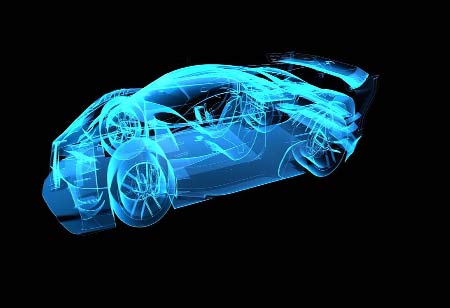THANK YOU FOR SUBSCRIBING
THANK YOU FOR SUBSCRIBING
Be first to read the latest tech news, Industry Leader's Insights, and CIO interviews of medium and large enterprises exclusively from Auto Tech Outlook

By
Auto Tech Outlook | Friday, January 27, 2023
Stay ahead of the industry with exclusive feature stories on the top companies, expert insights and the latest news delivered straight to your inbox. Subscribe today.
Consumers will benefit significantly from new autonomous driving technologies in terms of safety, convenience, and generating significant value within the industry.
FREMONT, CA: In recent years, the vision of fleets of driverless cars efficiently transporting passengers to their destinations has captured the public's imagination and fueled billions of dollars in investment. Despite setbacks that have pushed back autonomous vehicle (AV) launch schedules and slowed customer adoption, the mobility community is largely in agreement that autonomous driving (AD) has the potential to revolutionize transportation, consumer behavior, and society.
By the end of this decade, McKinsey research suggests AD could generate hundreds of billions of dollars for the auto industry. To realize the consumer and business benefits of autonomous driving, automakers and suppliers may need to develop new sales and business strategies, acquire new technological capabilities, and address safety concerns. This report examines the potential for autonomous technologies to disrupt the market for passenger cars, focusing on the private passenger car segment of the AD market. In addition, it outlines the critical success factors that every auto OEM, supplier, and tech provider must understand to succeed in the AD passenger car market.
AUTONOMOUS DRIVING COULD SIGNIFICANTLY BENEFIT DRIVERS, THE AUTOMOTIVE INDUSTRY, AND SOCIETY
AD could revolutionize the consumer mobility experience: AD systems may make driving safer, more convenient, and more enjoyable. Previously spent hours on the road could have been used to video call a friend, watch a funny movie, or even work. Driving an autonomous vehicle may increase worker productivity and even shorten the workday for employees with lengthy commutes. Since workers can perform their duties from an autonomous vehicle, they could move farther away from the office, attracting more people to rural and suburban areas. AD may also improve the mobility of elderly drivers by providing them with alternatives to public transportation and car-sharing. One study suggests that the increasing use of advanced driver-assistance systems (ADAS) could reduce the number of accidents by 2030.
AD may generate additional value for the automotive industry in addition to these consumer benefits: Currently, most automobiles are equipped with only the most fundamental ADAS features, but significant advancements in AD capabilities are imminent. Under certain conditions, vehicles will eventually achieve Society of Automotive Engineers (SAE) Level 4 (L4), or driverless control. According to a 2021 consumer survey by McKinsey, consumers desire access to AD features and are willing to pay for them. Increasing demand for AD systems could generate revenue in the billions of dollars. Vehicles with lidar-based Level 2+ (L2+) capabilities have component costs between $1,500 and $2,000, and even more for vehicles with Level 3 (L3) and L4 options. According to McKinsey analysis, ADAS and AD could generate between $300 billion and $400 billion in the passenger car market by 2035, based on consumer interest in AD features and existing commercial solutions.
 Copyright © 2025 AutoTech Outlook. All Rights Reserved | Privacy Policy | Subscribe | Sitemap | About us | Feedback Policy | Editorial Policy
Copyright © 2025 AutoTech Outlook. All Rights Reserved | Privacy Policy | Subscribe | Sitemap | About us | Feedback Policy | Editorial Policy 
However, if you would like to share the information in this article, you may use the link below:
https://www.autotechoutlookapac.com/news/the-promises-of-autonomous-vehicles--nwid-1235.html




